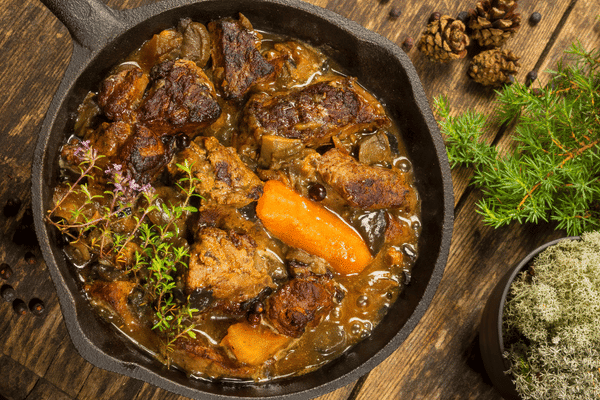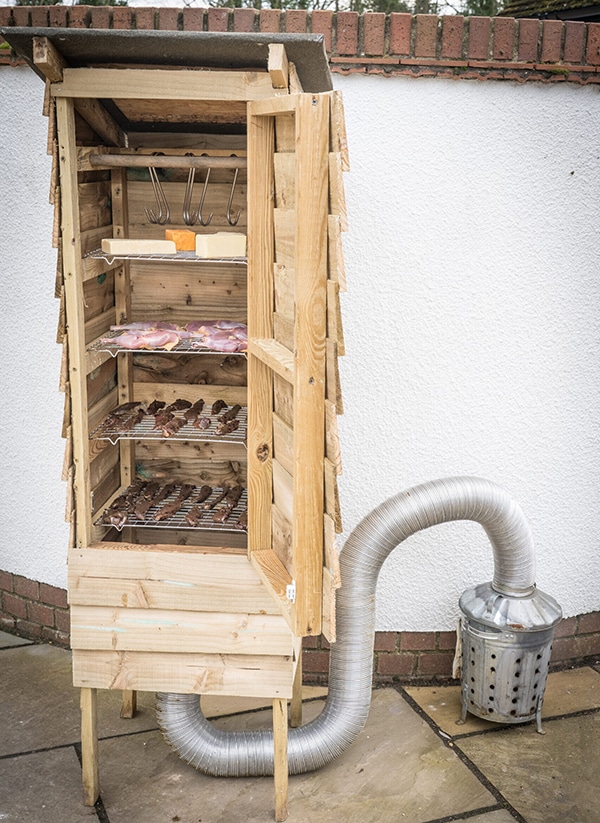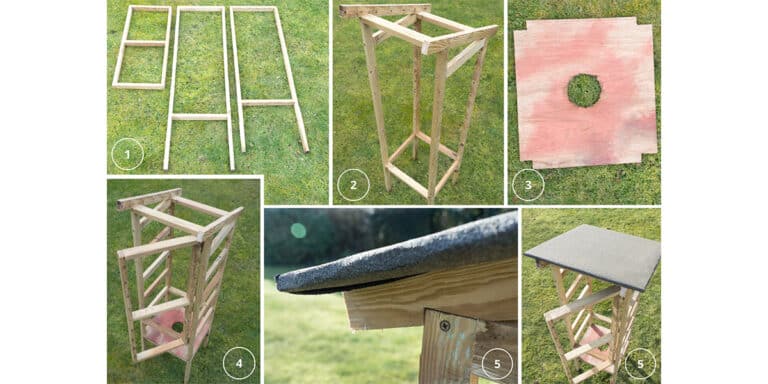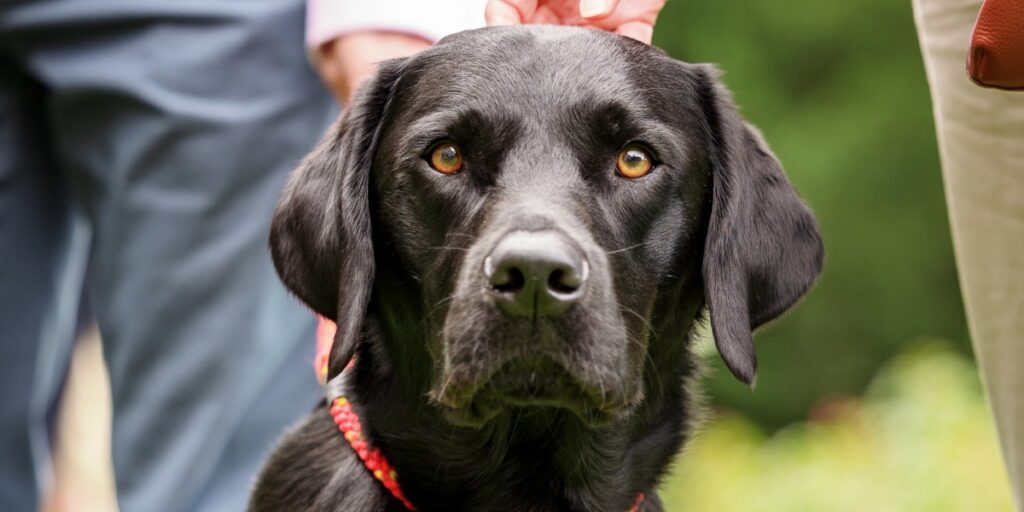
Venison in vogue
Will recent government strategies on food and deer management spark a boom in game meat consumption? Dr Conor O’Gorman reviews the proposals.
Get information on the legal shooting season for mammals and birds in the UK.
Apply for funding for your project or make a donation today
Comprehensive information and advice from our specialist firearms team.
Everything you need to know about shotgun, rifle and airgun ammunition.
Find our up-to-date information, advice and links to government resources.
Everything you need to know on firearms law and licensing.
All the latest news and advice on general licences and how they affect you.


BASC member Joe Wood shares his step-by-step guide to building a simple but effective cold smoker that he now wouldn’t be without.
 I’ve used mine to add flavour to all sorts – from venison and pheasant to pigeon and cheeses. Cold smoking flavours and preserves but doesn’t cook food. The food is placed away from the heat source so the smoke can cool before it reaches the item. The smoker temperature should be 30C or below for cold smoking.
I’ve used mine to add flavour to all sorts – from venison and pheasant to pigeon and cheeses. Cold smoking flavours and preserves but doesn’t cook food. The food is placed away from the heat source so the smoke can cool before it reaches the item. The smoker temperature should be 30C or below for cold smoking.
All cold smoked food items need to be cooked before eating. Smoking meat or fish is more successful if a dry salt-based cure or wet brine is used beforehand. This also helps to add flavour, tenderises, and draws out impurities. The exception is cheese, butter and vegetables that cold smoke well but do not require salting beforehand.
The three required elements to make a cold smoker are a firebox to create the smoke, some ducting to move and cool the smoke, and a chamber to contain the food and smoke. The design is only limited by your imagination and using recycled items can help to keep the cost down.
Hardwoods should be used for smoking and there are endless combinations. Fine sawdust, shavings or chips make the best material to provide a continuous flow of smoke without easily forming flames. Alder, cherry, apple, oak, hickory, beech or ash are all excellent choices to create unique flavour profiles.
The following step-by-step guide will, I hope, provide you with the detail necessary to have a go yourself…

Cut four lengths of roofing lath – two (1650mm) for the front frame, two (1500mm) for the rear. Then join the lengths with 410mm horizontal bars. The width needs to match that of the cooling racks used; in this case the racks were 450mm wide and each section was 460mm wide.
Place the bottom horizontal bars 650mm from the ground – this will provide the support for the bottom plate at Step 3.
Cut two more lengths (950mm) for the door, then three 350mm horizontal bars. All joints need to be pre-drilled, to avoid splitting the sections, and screwed together.
Cut four (350mm) horizontal bars. Pre-drill and screw to connect the front and rear frames together.
Then cut two roof bars (660mm). Where they meet the rear frame, cut some rebates into the roof bars to provide an approximate angle of 600 for the slope of the roof (see image). Pre-drill and screw into place.
Cut the bottom plate (460mm x 450mm) from the plywood or OSB. Each corner needs a 50mm x 25mm section cutting out of it to accommodate the vertical bars of the front and rear frames.
Cut a hole in the centre of the plate to match the ducting used. The hole can be cut by drilling multiple connected smaller holes.
Use the door hinges to hang the door section inside the front frame. Cut six (350mm) horizontal bars and place at approximately 200mm intervals between the front and rear frames. Pre-drill and screw together. These will provide the supports for the cooling racks. Fit the bottom plate and screw into place.
Wrap the roofing felt around the plywood or OSB roof section and tack into place. Pre-drill and screw the roof section into place from underneath the roof bars. Ensure the screws do not penetrate the roofing felt.

Fit the lengths of broom handle or similar bar. Pre-drill and screw between the top horizontal bars connecting the front and rear frames at equal intervals. These will serve as the bars from which to hang items in the smoker.
Fit the lengths of broom handle or similar bar. Pre-drill and screw between the top horizontal bars connecting the front and rear frames at equal intervals. These will serve as the bars from which to hang items in the smoker.
Fit the ducting to the incinerator with a hose clip. Using a small incinerator is ideal as the lid can be removed easily. Pull the other end of the ducting through the hole in the base plate inside the smoker. Tack in place if required.
Make a 150mm diameter cylinder, with a height of roughly 300mm, with the mesh wire. This will hold the sawdust or woodchips to generate the smoke inside the firebox.
These can be tacked in place but are easier to clean if left removable.
Cut 12 lengths of 470mm feather edge board for the rear cladding. Cut 28 lengths of 450mm for the side sections. Cut three 500mm lengths for the section below the door. Cut nine lengths of 450mm for the door.
The feather edge board should be attached to the frame with the thicker edge at the bottom and an overlap of 25mm per section. Mark with a pencil at 100mm intervals and ensure each board is level before attaching to the frames. Each section is tacked into place using the round head nails.
The top boards of each run of cladding at the rear and sides will need cutting and adjusting to fit the roof profile or roof bars.
A final 470mm length will be required above the door that should be cut 50mm short of the roof to provide an exit vent for the smoke.
And with that, your new smoker is ready to go!


Will recent government strategies on food and deer management spark a boom in game meat consumption? Dr Conor O’Gorman reviews the proposals.

BASC teams will have visited more than 30 catering colleges by Spring 2023.

In just over a week, The Game Fair returns to Blenheim Palace for the first time in ten years. Claim your complimentary BASC member entry.
Sign up to our weekly newsletter and get all the latest updates straight to your inbox.
© 2025 British Association for Shooting and Conservation. Registered Office: Marford Mill, Rossett, Wrexham, LL12 0HL – Registered Society No: 28488R. BASC is a trading name of the British Association for Shooting and Conservation Limited which is authorised and regulated by the Financial Conduct Authority (FCA) under firm reference number 311937.
BASC Direct Ltd is an Introducer Appointed Representative of Agria Pet Insurance Ltd who administer the insurance and is authorised and regulated by the Financial Conduct Authority, Financial Services Register Number 496160. Agria Pet Insurance is registered and incorporated in England and Wales with registered number 04258783. Registered office: First Floor, Blue Leanie, Walton Street, Aylesbury, Buckinghamshire, HP21 7QW. Agria insurance policies are underwritten by Agria Försäkring.
If you have any questions or complaints about your BASC membership insurance cover, please email us. More information about resolving complaints can be found on the FCA website or on the EU ODR platform.